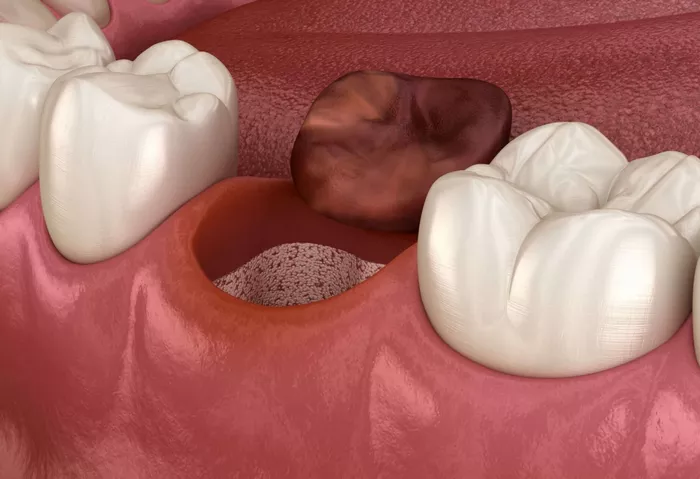Dental implant placement has revolutionized restorative dentistry, offering a long-term solution for missing teeth. While generally safe and highly successful, complications may arise post-surgery. One such rare but painful complication is dry socket. Though commonly associated with tooth extractions, dry socket after implant placement is possible and can significantly delay recovery.
This article delves into the causes, symptoms, risk factors, treatment, and prevention of dry socket related to Dental Implants. Understanding this condition can help patients identify symptoms early and take appropriate action.
What is Dry Socket?
Dry socket, medically known as alveolar osteitis, occurs when the blood clot that forms in the socket after a dental procedure becomes dislodged or fails to form properly. This exposes the underlying bone and nerve endings, resulting in severe pain and delayed healing. Although more common in tooth extractions, dry socket can also occur after Dental Implant Surgery, particularly during the healing phase.
Is Dry Socket Common After Implant Placement?
Dry socket is relatively uncommon after implant placement because the surgical site is usually sutured, and a blood clot is less likely to be dislodged. However, certain conditions or actions post-surgery can increase the likelihood of developing this painful condition. When it does occur after a Dental Implant Procedure, it can jeopardize the implant’s stability and integration with the jawbone.
Causes of Dry Socket After Implant Placement
Several factors can contribute to the development of dry socket following implant surgery:
Smoking: Nicotine restricts blood flow and interferes with clot formation.
Trauma at the Surgical Site: Aggressive brushing, sucking through a straw, or hard chewing can dislodge the clot.
Infection: Pre-existing or post-operative infection may dissolve the clot prematurely.
Poor Oral Hygiene: Bacteria can infiltrate the healing site and compromise clot stability.
Complex Surgery: Difficult or prolonged surgical procedures increase the risk of post-operative complications like dry socket.
Recognizing Symptoms of Dry Socket After Implant Surgery
Dry socket is characterized by intense pain that typically begins 2-4 days after surgery. Some of the most common symptoms include:
Severe, throbbing pain at the implant site or radiating to the ear and temple.
Visible bone in the socket where the blood clot should be.
Bad breath or foul taste in the mouth due to bacterial infection.
Swelling and inflammation around the affected area.
Delayed healing compared to expected recovery time.
Diagnosis and Dental Evaluation
Only a dentist or oral surgeon can definitively diagnose dry socket. Diagnosis typically includes:
Visual inspection: The absence of a blood clot or presence of exposed bone confirms the condition.
Patient history: Reviewing recent behaviors like smoking, straw usage, or lack of hygiene.
Radiographic evaluation: X-rays help rule out other complications like infection or implant failure.
How is Dry Socket Treated After Implant Surgery?
Treatment focuses on pain relief and supporting proper healing. Common interventions include:
Medicated dressings: The dentist may apply a medicated dressing to the socket to soothe the area and reduce discomfort.
Pain medication: Prescription or over-the-counter anti-inflammatory drugs can help manage pain.
Antibiotics: If infection is present, antibiotics may be prescribed.
Rinse and cleaning: Gentle saline or chlorhexidine rinses may be used to keep the socket clean and aid in healing.
Follow-up visits: Regular monitoring ensures the socket is healing and that no further intervention is necessary.
Healing Timeline for Dry Socket After Implant Placement
Healing from dry socket can take several days to a few weeks, depending on the severity of the condition and the treatment plan. Patients may experience:
Initial relief: Within a day or two of treatment.
Gradual reduction of symptoms: Over the following week.
Full recovery: Generally achieved in two to three weeks with proper care.
Risks and Complications If Left Untreated
Failing to treat dry socket can lead to more serious complications, including:
Chronic pain: Prolonged exposure of the bone can cause ongoing discomfort.
Infection: The open wound is susceptible to bacterial contamination.
Implant failure: If the implant does not integrate properly due to poor healing, it may need to be removed.
Preventive Measures Against Dry Socket After Implant Surgery
Prevention is key in avoiding dry socket after dental implant placement. Patients should follow these guidelines:
Do not smoke: Refrain from smoking for at least one week post-surgery.
Avoid straws: Suction can disturb the surgical site.
Eat soft foods: Stick to liquids and soft foods to prevent trauma to the implant site.
Maintain oral hygiene: Follow cleaning instructions provided by your dentist.
Attend follow-up appointments: Let your dentist monitor healing progress.
Dry Socket vs. Normal Healing: Key Differences
It is important to distinguish between normal post-operative discomfort and dry socket. Key differences include:
Timing: Normal pain decreases after the first 48 hours, while dry socket pain intensifies.
Pain level: Dry socket pain is severe and persistent.
Visual signs: Exposed bone and absence of blood clot are clear indicators.
Who is Most at Risk?
Some individuals are more prone to developing dry socket due to various health or behavioral factors:
- Smokers
- People with poor oral hygiene
- Women on birth control pills
- Patients with prior dry socket episodes
- Individuals with diabetes or immune disorders
Success Rate of Implants Despite Dry Socket
Even when dry socket occurs, the overall success rate of dental implants remains high. With prompt treatment and diligent aftercare, most implants heal successfully and integrate well with the jawbone. However, monitoring is essential to ensure no further complications develop during the osseointegration process.
Conclusion
While dry socket is rare after implant placement, it is a serious condition that requires prompt attention. By understanding the causes, recognizing symptoms, and following preventive measures, patients can significantly reduce their risk. Open communication with your dental care provider, combined with diligent self-care, is essential for a successful recovery.
Remember, the journey toward a healthier, more confident smile begins with education and awareness. Should any concerns arise after your dental implant surgery, do not hesitate to consult with your dental professional for guidance and support.
Related topics

